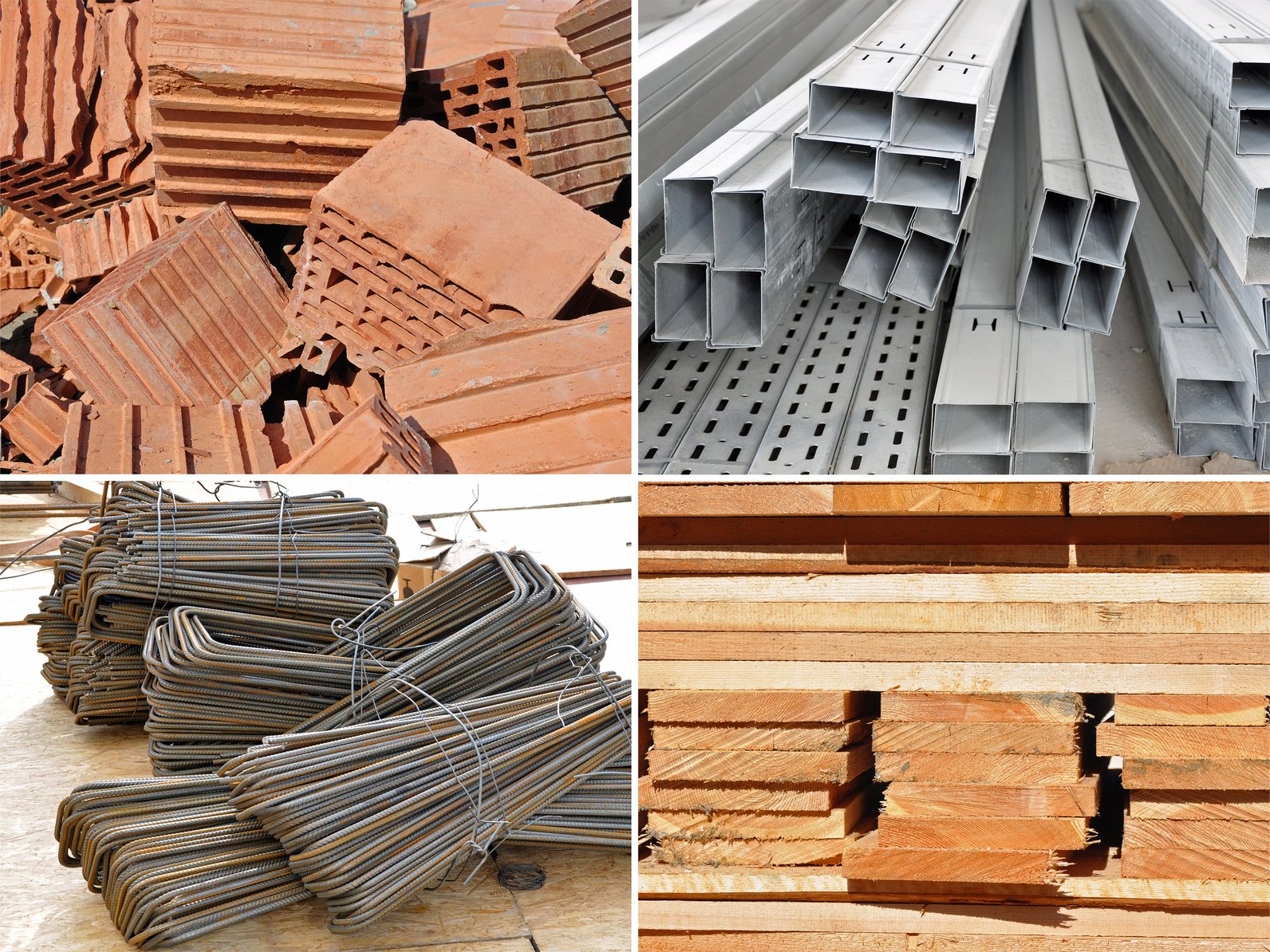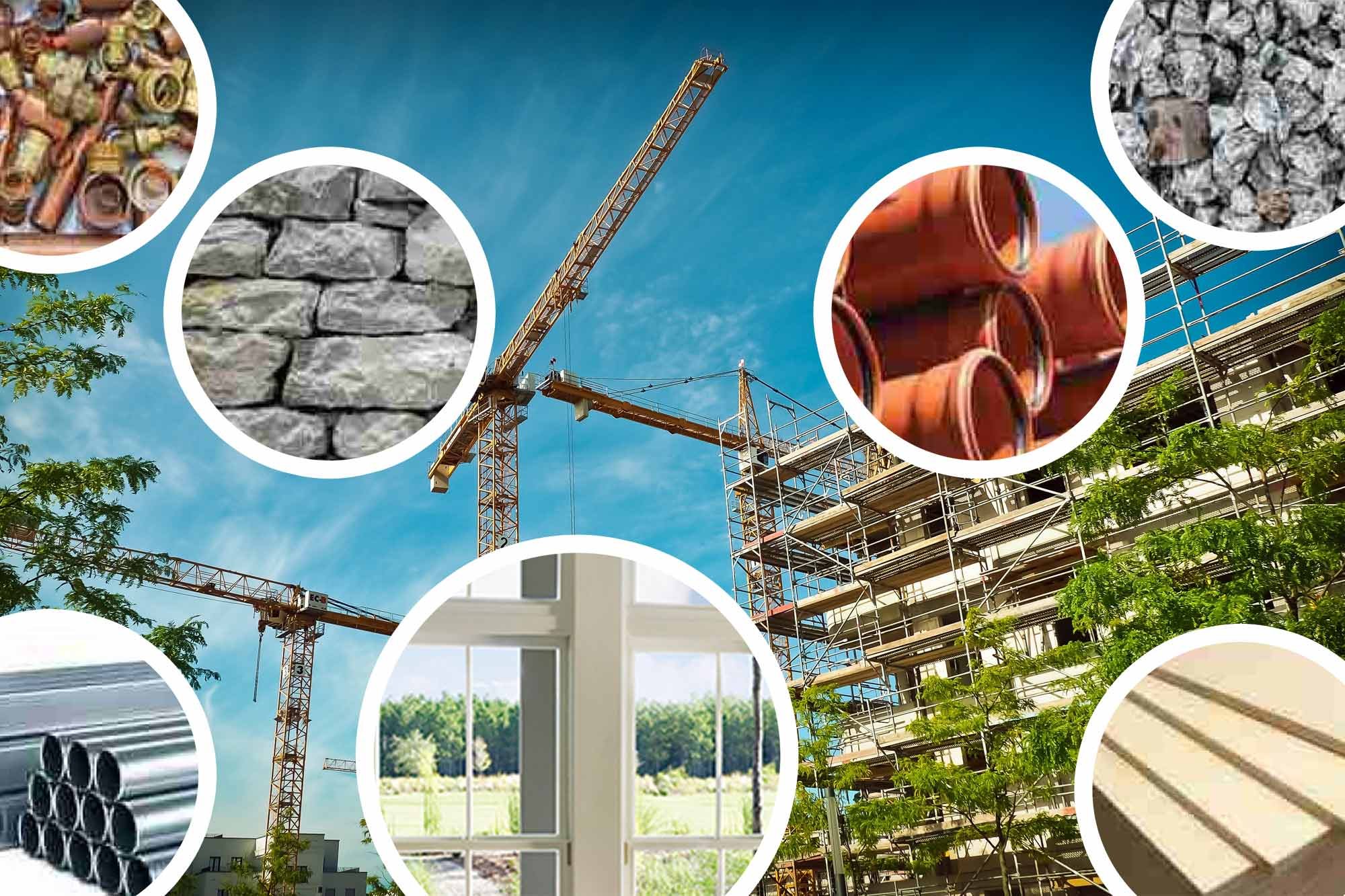Embark on a comprehensive journey into the world of home construction materials in our guide, [- A Comprehensive Guide to Home Construction Materials]. Here, you’ll discover an exhaustive wealth of information on material types, properties, costs, and sustainability considerations. Our expert insights will empower you to make informed decisions that optimize the structural integrity, aesthetics, and lifespan of your dream home.
Key Takeaways:
- Understanding material properties, construction techniques, and industry best practices is crucial for selecting appropriate home construction materials.
- Common materials used in home construction include concrete blocks, cement, steel, and sand.
- Each material has unique properties and applications, such as concrete blocks for non-load-bearing walls, cement as a binding agent, steel for strength, and sand for concrete and mortar.
- Evaluating material suitability, comparing alternatives, and considering factors like performance, cost-effectiveness, and sustainability are essential for optimizing project outcomes.
- Emerging trends and innovative materials in the construction industry should be considered for potential advancements.
Home Construction Materials: A Comprehensive Guide

Types of Home Construction Materials:
- Concrete: Strong, durable, and fire-resistant, used in foundations, walls, and slabs.
- Wood: Versatile and renewable, used in framing, siding, and flooring.
- Steel: High strength-to-weight ratio, used in structural members and appliances.
- Masonry: Brick, block, or stone, used in exterior walls and chimneys.
- Glass: Transparent or translucent, used in windows, doors, and skylights.
Factors to Consider When Selecting Materials:
- Climate: Materials should be resistant to local weather conditions, such as temperature extremes, moisture, and insects.
- Budget: Costs vary depending on material type, quantity, and installation complexity.
- Design Requirements: Aesthetics, load-bearing capacity, and durability should match the intended design.
- Sustainability: Choose materials that are environmentally friendly, reducing energy consumption and carbon footprint.
Emerging Trends and Innovations:
- Smart Materials: Materials with built-in sensors or actuators, providing enhanced performance and convenience.
- Composite Materials: Blends of two or more materials, offering unique properties such as strength and durability.
- Bio-based Materials: Materials derived from renewable sources, promoting sustainability.
- Recycled Materials: Materials made from recycled waste, reducing environmental impact.
- Prefabricated Components: Pre-assembled sections that streamline construction and reduce on-site waste.
Selecting the Right Material for Your Project:
- Assess your needs: Consider climate, budget, design, and sustainability factors.
- Research different materials: Explore properties, advantages, and disadvantages of each option.
- Compare costs: Obtain quotes from suppliers and contractors.
- Consult with experts: Seek guidance from architects, engineers, or contractors for professional advice.
- Make an informed decision: Weigh all factors to select the materials that best meet your requirements.
Table: Common Home Construction Materials
| Material | Properties | Applications |
|---|---|---|
| Concrete | Strong, durable, fire-resistant | Foundations, walls, slabs |
| Wood | Versatile, renewable, lightweight | Framing, siding, flooring |
| Steel | High strength-to-weight ratio, corrosion-resistant | Structural members, appliances |
| Masonry | Durable, weather-resistant, fire-resistant | Exterior walls, chimneys |
| Glass | Transparent, translucent, lightweight | Windows, doors, skylights |
You could check out our expert advice on home construction methods to ensure your home is built to last. If you want to make the process even easier and more stress-free, consider getting home construction insurance to protect your investment and provide peace of mind during the construction process.
Home Construction Materials Cost: A Comprehensive Guide

Key Takeaways:
- Construction costs vary according to building type and specifications.
- M&E costs include electrical services, communications, fire protection, and prevention systems.
- Construction cost data is available for different building types and regions.
- Exchange rates, prime rates, currency fluctuations, and utility costs impact construction costs.
Understanding Construction Material Costs
When it comes to home construction, material choices significantly impact the overall cost. Here’s a breakdown of some key considerations:
- Type of material: Different materials have varying costs, from affordable concrete blocks to premium steel.
- Quantity: The amount of materials required for your project will determine the bulk of your expenses.
- Quality: Higher quality materials usually come with a higher price tag but offer greater durability and longevity.
- Labor costs: The cost of labor for installing and working with materials can also add up.
- Shipping and delivery: Transportation costs may vary depending on the distance and availability of materials.
Common Home Construction Materials
Hollow Blocks:
- Non-load-bearing units used for walls and partitions.
- Cost-effective compared to other materials.
- Good insulation properties.
Cement:
- Binding agent for concrete and mortar.
- Essential for structural rigidity.
- Important to consider the type of cement based on specific requirements.
Steel:
- High strength and durability.
- Used in structural elements, reinforcing bars, and beams.
- Cost varies based on steel grade and quantity.
Sand:
- Granular material used in concrete, mortar, and plaster.
- Ensures good workability and strength.
- Availability and transportation costs impact the overall price.
Tips for Cost-Effective Material Selection
- Plan ahead: Determine your project requirements to accurately estimate material needs.
- Compare prices: Research and compare material costs from different suppliers.
- Negotiate: Don’t hesitate to negotiate with suppliers for better pricing on bulk orders.
- Consider recycled materials: Sustainable options may offer cost savings while reducing environmental impact.
- Factor in labor costs: Remember that labor expenses can add up, so factor them into your budget when selecting materials.
Conclusion
Understanding home construction materials costs is crucial for effective project planning and budgeting. By considering the type of material, quantity, quality, and other factors, you can make informed decisions to minimize expenses while ensuring a quality build. Remember, research, negotiation, and responsible material selection will help you achieve cost-effective and durable home construction.
Sources:
- Arcadis Construction Cost Handbook 2019 – Indonesia
- Savills Indonesia | Construction Cost Guide
FAQ
Q1: What are the commonly used construction materials for home construction?
A1: Concrete blocks, cement, steel, and sand are frequently used materials for home construction. Concrete blocks and cement are primarily utilized for structural components, while steel provides reinforcement and durability. Sand serves as a filler material in concrete and mortar.
Q2: What are the key differences between hollow blocks and solid blocks?
A2: Hollow blocks are lightweight and non-load-bearing units that are commonly used for walls and partitions. Solid blocks, on the other hand, are dense and load-bearing, suitable for structural applications such as foundations and load-bearing walls.
Q3: How do I choose the most cost-effective materials for my home construction project?
A3: Consider the material’s cost, durability, availability, and ease of installation. Compare different materials and their specifications to determine the best combination of factors that meets your project requirements and budget. Research bulk discounts and negotiate with suppliers to optimize cost-effectiveness.
Q4: What are the environmental considerations associated with different construction materials?
A4: Choose materials with low environmental impact, such as recycled or sustainable options. Consider the energy efficiency and durability of materials to minimize long-term resource consumption and operational costs. Opt for materials that can be reused or repurposed at the end of their life cycle to reduce waste.
Q5: How can I ensure the quality and performance of construction materials?
A5: Source materials from reputable suppliers with industry certifications and quality control measures in place. Inspect materials upon delivery to verify their condition and specifications. Follow manufacturer guidelines for proper installation and maintenance. Hire experienced contractors who are knowledgeable about material properties and best practices to ensure optimal performance and longevity.
- Dark Backsplash Ideas: Drama and Depth for Your Kitchen - November 7, 2025
- Black Backsplash Tile: Find The Perfect Style For Your Kitchen - November 6, 2025
- Black Backsplash With White Cabinets: A Bold Kitchen Design - November 5, 2025










